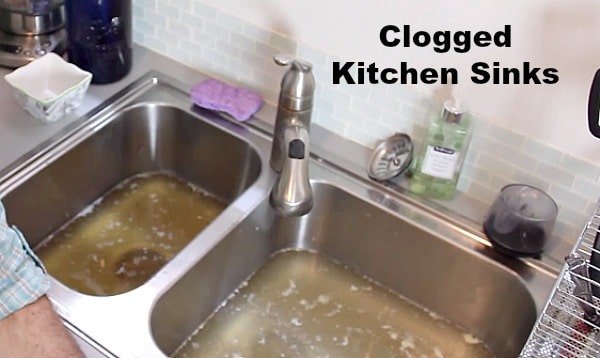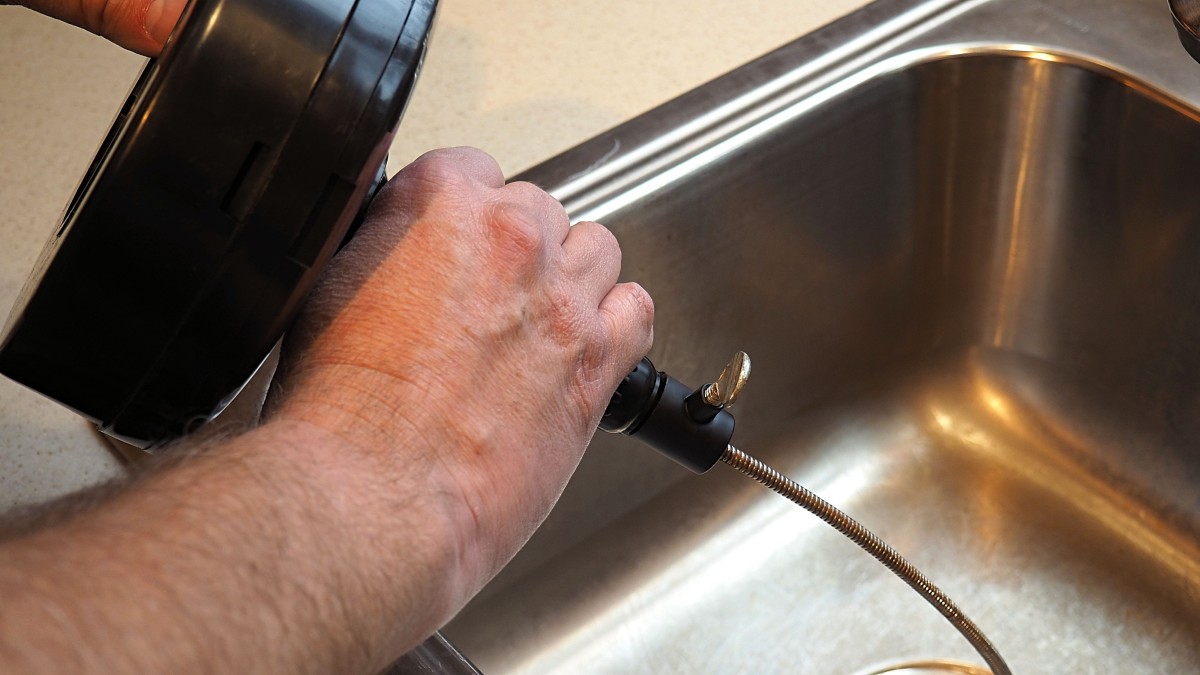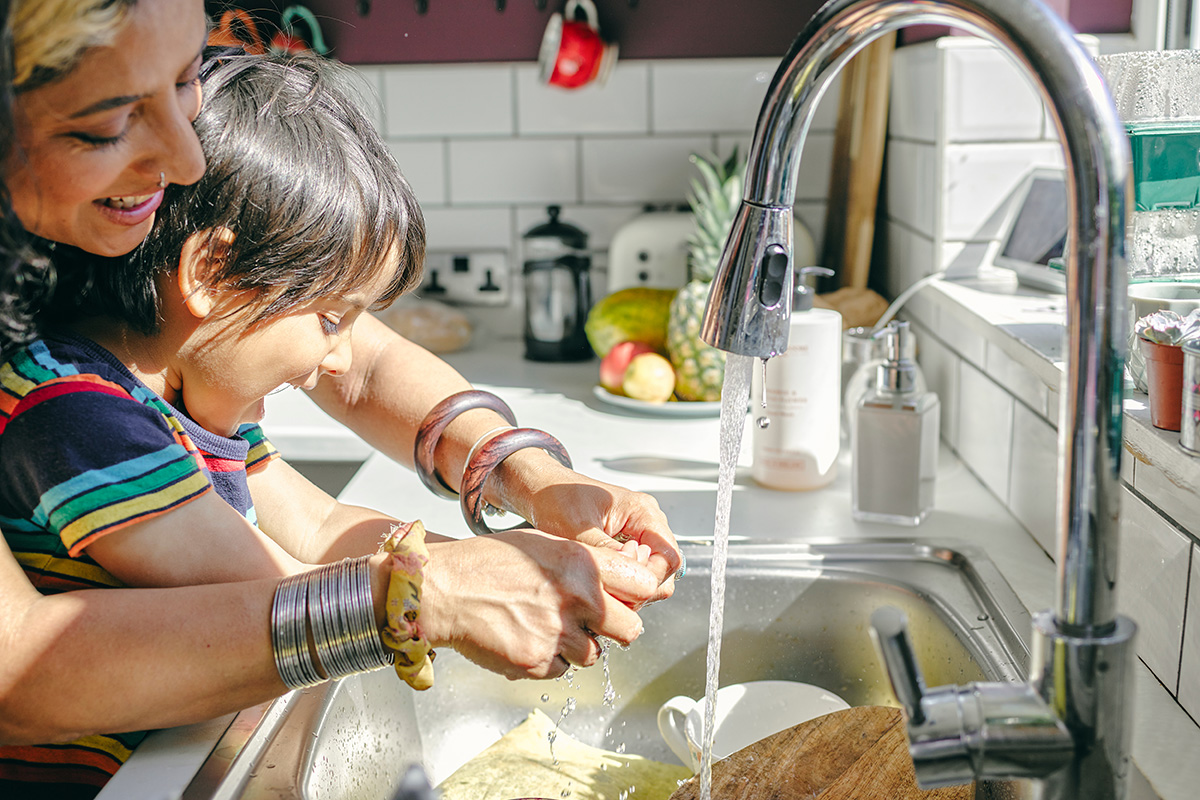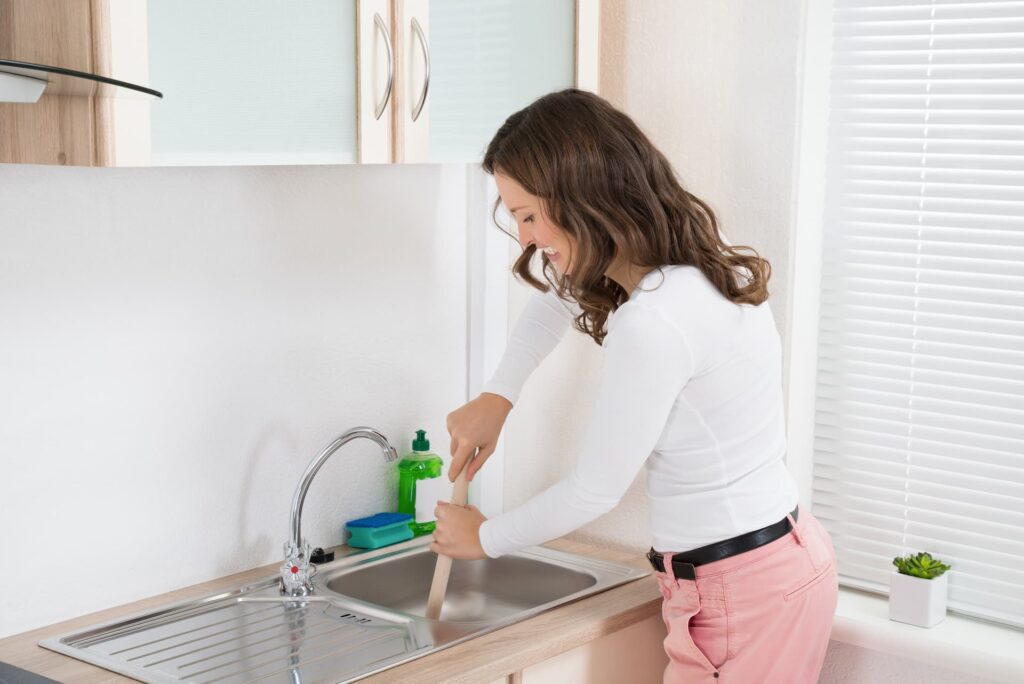How to Clear a Kitchen Sink Clog
A clogged kitchen sink can be a major inconvenience, causing stagnant water and unpleasant odors. But fear not, clearing a kitchen sink clog doesn't have to be a daunting task. With the right tools and techniques, you can have your sink draining smoothly again in no time. Follow these steps to clear a kitchen sink clog and get your sink back to its sparkling self.
Clearing a Kitchen Sink Clog: Tips and Tricks
Before attempting to clear a kitchen sink clog, it's important to identify the cause of the clog. This will help determine the best method for unclogging your sink. Some common causes of kitchen sink clogs include food scraps, grease buildup, and foreign objects. Here are some tips and tricks to help you clear a kitchen sink clog:
1. Use a plunger: This is a tried and true method for unclogging a sink. Place the plunger over the drain, ensuring a tight seal. Then, plunge vigorously to create suction and dislodge the clog.
2. Try a drain snake: If the plunger doesn't work, a drain snake can be an effective tool for removing clogs. Insert the snake into the drain and twist it to break up and remove the clog.
Unclogging a Kitchen Sink: Step-by-Step Guide
If traditional methods like a plunger or drain snake aren't doing the trick, you may need to try a more involved approach. Here is a step-by-step guide for unclogging a kitchen sink:
Step 1: Clear the area: Before you begin, clear out any items from under the sink and place a bucket or towel under the pipes to catch any water that may leak out.
Step 2: Remove the drain trap: Using a wrench, loosen the nuts on the drain trap and remove it from the pipes. This will give you access to the clog.
Step 3: Inspect the trap: Check the trap for any visible clogs. If you see a clog, remove it and reattach the trap. If there is no visible clog, move on to the next step.
Step 4: Snake the drain: Insert a drain snake into the drain and twist it to break up and remove the clog. If the snake encounters resistance, continue to twist and push until the clog is fully removed.
Step 5: Reattach the trap: Once the clog is removed, reattach the drain trap and tighten the nuts with a wrench.
Step 6: Test the drain: Turn on the water and test the drain to ensure it is flowing freely. If the water is still not draining properly, you may need to call a professional plumber for further assistance.
DIY Methods for Clearing a Kitchen Sink Clog
If you prefer to use natural ingredients instead of harsh chemicals, there are several DIY methods for clearing a kitchen sink clog. Here are a few options to try:
Baking soda and vinegar: Pour one cup of baking soda down the drain, followed by one cup of vinegar. Let it sit for 30 minutes, then pour hot water down the drain to flush out the clog.
Salt and boiling water: Mix half a cup of salt with boiling water and pour it down the drain. Let it sit for a few minutes, then follow with hot water to clear the clog.
Dish soap and hot water: Squirt a generous amount of dish soap down the drain, followed by hot water. The soap will help to dissolve any grease or oil causing the clog.
Common Causes of Kitchen Sink Clogs
Kitchen sink clogs can be caused by a variety of factors, but some of the most common include:
Food scraps: Putting food scraps down the drain can quickly lead to a clog. Be sure to scrape all excess food into the trash before washing dishes.
Grease buildup: Pouring grease or oil down the drain can cause it to solidify and create a clog. Instead, dispose of grease in the trash.
Foreign objects: Small objects like utensils, jewelry, or toys can accidentally fall into the sink and cause a clog. Be careful when using the sink and keep an eye out for any potential hazards.
Using Natural Ingredients to Clear a Kitchen Sink Clog
If you prefer to use natural ingredients instead of harsh chemicals, there are several options for clearing a kitchen sink clog:
Baking soda and vinegar: This combination creates a foaming reaction that can help to break down clogs and flush them out of the drain.
Salt and boiling water: Salt is a natural abrasive that can help to loosen and remove clogs when combined with boiling water.
Lemon juice and baking soda: The acidic properties of lemon juice can help to dissolve clogs, while baking soda adds an extra cleaning boost.
Tools You'll Need to Clear a Kitchen Sink Clog
Before attempting to clear a kitchen sink clog, be sure to have the following tools on hand:
Plunger: A plunger is a must-have for unclogging a sink. Look for one with a flat bottom for a tighter seal.
Drain snake: A drain snake is a flexible tool that can reach deep into your pipes to remove clogs.
Wrench: A wrench is necessary for loosening and tightening nuts on the drain trap.
Bucket or towel: Placing a bucket or towel under the pipes can help catch any water that may leak out during the unclogging process.
Preventing Kitchen Sink Clogs: Maintenance Tips
The best way to deal with a kitchen sink clog is to prevent it from happening in the first place. Here are some maintenance tips to help keep your sink running smoothly:
Scrape plates before washing: Be sure to scrape all excess food scraps into the trash before washing dishes to prevent them from going down the drain.
Use a strainer: Placing a strainer over the drain can help catch any food scraps or other debris before it goes down the drain.
Don't pour grease down the drain: Instead of pouring grease down the drain, dispose of it in the trash or save it in a container for later use.
Run hot water after each use: After using the sink, run hot water down the drain for a few seconds to help flush away any residue.
When to Call a Professional for Kitchen Sink Clog Removal
If your sink is still clogged after attempting DIY methods and using the appropriate tools, it may be time to call a professional plumber. They have the knowledge and equipment to effectively remove stubborn clogs and get your sink back in working order.
Clearing a Kitchen Sink Clog: Troubleshooting Common Issues
If your sink is still not draining properly after following these tips and tricks, there may be a more complex issue at hand. Some common issues that can cause persistent clogs include tree root intrusion, collapsed pipes, or a damaged sewer line. If you suspect any of these issues, it's best to call a professional plumber for assistance.
By following these tips and tricks, you can effectively clear a kitchen sink clog and keep your sink running smoothly. Remember to always be cautious when using the sink and properly dispose of any potential clog-causing materials. With a little maintenance and care, you can prevent future clogs and keep your kitchen sink in top shape for years to come.
How to Effectively Clear a Kitchen Sink Clog

Understanding the Common Causes of Kitchen Sink Clogs
 A clogged kitchen sink can be a major inconvenience in any household. Not only does it disrupt your daily routine, but it also poses potential health hazards and can lead to costly repairs if left untreated. The first step in effectively clearing a clog is to understand what causes it in the first place.
Food debris, grease, and soap residue are the main culprits of kitchen sink clogs.
Over time, these substances can build up and create a blockage in your sink's drain. Additionally, things like coffee grounds, fibrous foods, and eggshells should never be put down the drain as they can easily get stuck and cause clogs.
A clogged kitchen sink can be a major inconvenience in any household. Not only does it disrupt your daily routine, but it also poses potential health hazards and can lead to costly repairs if left untreated. The first step in effectively clearing a clog is to understand what causes it in the first place.
Food debris, grease, and soap residue are the main culprits of kitchen sink clogs.
Over time, these substances can build up and create a blockage in your sink's drain. Additionally, things like coffee grounds, fibrous foods, and eggshells should never be put down the drain as they can easily get stuck and cause clogs.
Tools and Techniques to Clear a Kitchen Sink Clog
 Now that you understand the causes of a clogged kitchen sink, it's time to learn how to effectively clear it. The first tool you'll need is a plunger.
This is a tried and true method for clearing most sink clogs.
Simply place the plunger over the drain and push and pull vigorously to create suction. This should dislodge the clog and allow water to flow freely again.
If the plunger doesn't work, you may need to use a drain snake. This tool is designed to go deep into the pipes and break apart any stubborn clogs.
Be sure to wear gloves and follow the manufacturer's instructions carefully when using a drain snake.
Another option is to use a mixture of hot water, baking soda, and vinegar to dissolve the clog. Let the mixture sit in the drain for a few minutes before flushing it with hot water.
Now that you understand the causes of a clogged kitchen sink, it's time to learn how to effectively clear it. The first tool you'll need is a plunger.
This is a tried and true method for clearing most sink clogs.
Simply place the plunger over the drain and push and pull vigorously to create suction. This should dislodge the clog and allow water to flow freely again.
If the plunger doesn't work, you may need to use a drain snake. This tool is designed to go deep into the pipes and break apart any stubborn clogs.
Be sure to wear gloves and follow the manufacturer's instructions carefully when using a drain snake.
Another option is to use a mixture of hot water, baking soda, and vinegar to dissolve the clog. Let the mixture sit in the drain for a few minutes before flushing it with hot water.
Preventing Future Clogs
 Once you've successfully cleared the clog, it's important to take steps to prevent it from happening again.
Regularly pouring boiling water down the drain can help dissolve any buildup of grease and soap residue.
You can also use a drain cover to catch any food debris before it goes down the drain.
If you have a garbage disposal, be sure to run cold water while using it and avoid putting any large or fibrous foods down the drain.
It's also a good idea to have your pipes professionally cleaned every few years to prevent buildup and clogs.
Once you've successfully cleared the clog, it's important to take steps to prevent it from happening again.
Regularly pouring boiling water down the drain can help dissolve any buildup of grease and soap residue.
You can also use a drain cover to catch any food debris before it goes down the drain.
If you have a garbage disposal, be sure to run cold water while using it and avoid putting any large or fibrous foods down the drain.
It's also a good idea to have your pipes professionally cleaned every few years to prevent buildup and clogs.
In Conclusion
 A clogged kitchen sink can be a frustrating and messy problem, but with the right tools and techniques, it can be easily cleared. Remember to always be cautious when using any tools and to take preventative measures to avoid future clogs. By following these tips, you can keep your kitchen sink running smoothly and avoid any unnecessary headaches.
A clogged kitchen sink can be a frustrating and messy problem, but with the right tools and techniques, it can be easily cleared. Remember to always be cautious when using any tools and to take preventative measures to avoid future clogs. By following these tips, you can keep your kitchen sink running smoothly and avoid any unnecessary headaches.







:max_bytes(150000):strip_icc()/how-to-unclog-a-kitchen-sink-2718799_sketch_FINAL-8c5caa805a69493ab22dfb537c72a1b7.png)














































:max_bytes(150000):strip_icc()/freshen-and-unclog-drain-with-baking-soda-1900466-22-bbf940b70afa4d5abef0c54da23b1d3f.jpg)
































